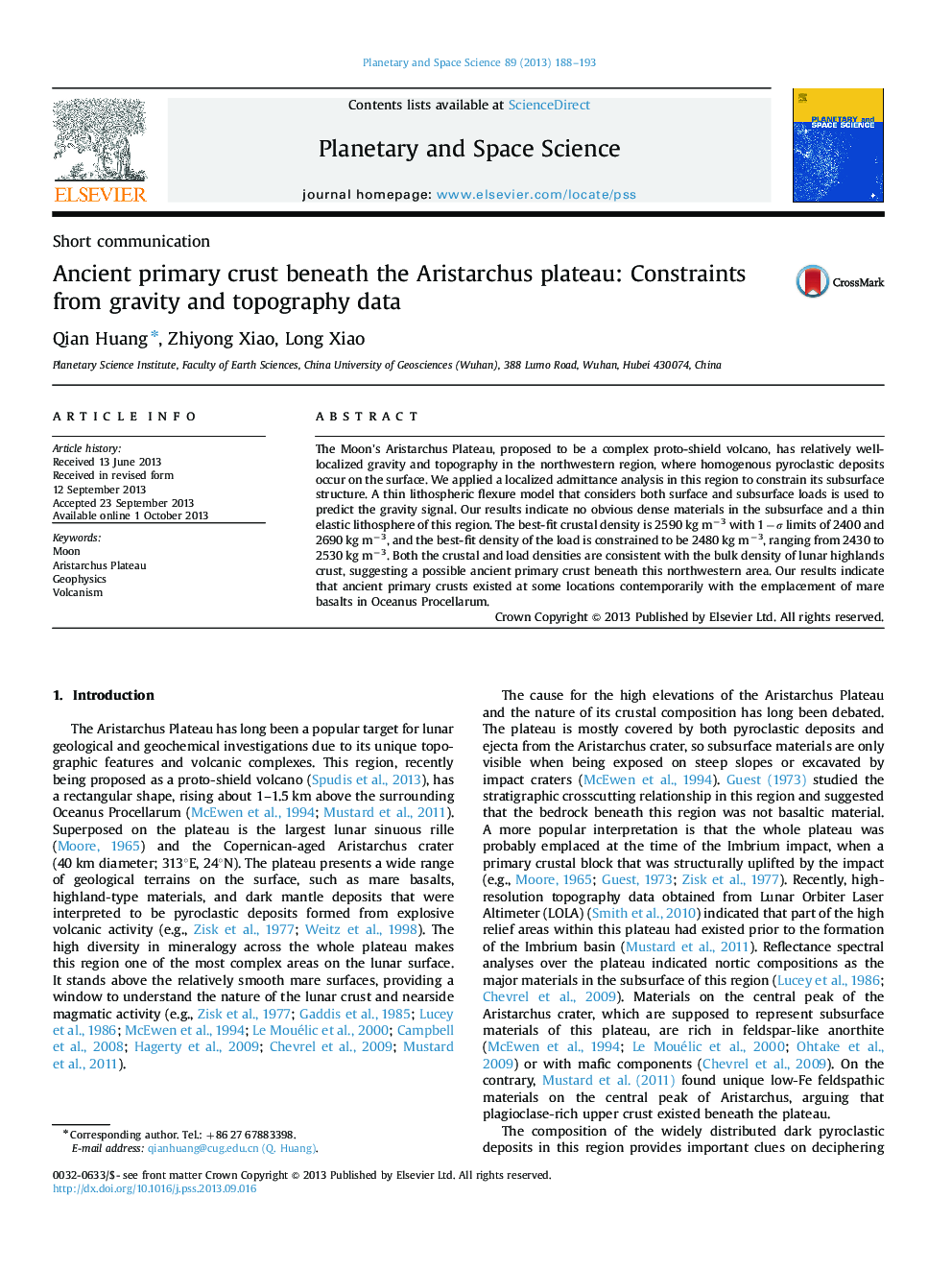| Article ID | Journal | Published Year | Pages | File Type |
|---|---|---|---|---|
| 1781248 | Planetary and Space Science | 2013 | 6 Pages |
•Crustal and load densities are calculated from localized admittance analyses.•This area has insufficient subsurface loads and a thin elastic lithosphere.•The subsurface crust is supposed to be a block of ancient highland crust.
The Moon's Aristarchus Plateau, proposed to be a complex proto-shield volcano, has relatively well-localized gravity and topography in the northwestern region, where homogenous pyroclastic deposits occur on the surface. We applied a localized admittance analysis in this region to constrain its subsurface structure. A thin lithospheric flexure model that considers both surface and subsurface loads is used to predict the gravity signal. Our results indicate no obvious dense materials in the subsurface and a thin elastic lithosphere of this region. The best-fit crustal density is 2590 kg m−3 with 1−σ limits of 2400 and 2690 kg m−3, and the best-fit density of the load is constrained to be 2480 kg m−3, ranging from 2430 to 2530 kg m−3. Both the crustal and load densities are consistent with the bulk density of lunar highlands crust, suggesting a possible ancient primary crust beneath this northwestern area. Our results indicate that ancient primary crusts existed at some locations contemporarily with the emplacement of mare basalts in Oceanus Procellarum.
